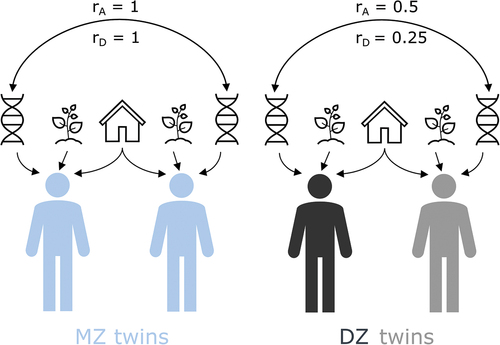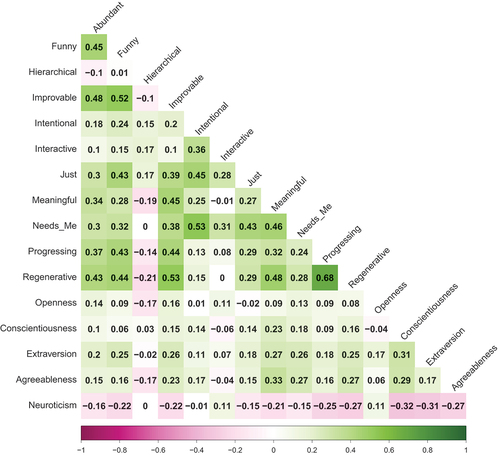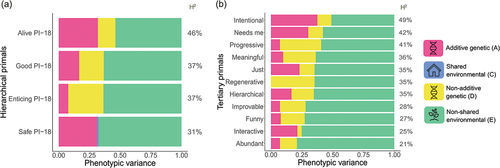Figures & data
Figure 1. Heritability monozygotic (MZ) versus dizygotic (DZ) twins.

Figure 2. Phenotypic correlation: PI-18 primals and personality traits.

Figure 3. Phenotypic correlation: tertiary primals and personality traits.

Figure 4. Full ACE/ADE models: PI-18 primals on the left (panel a) and tertiary primals on the right (panel b) with broad sense heritability (H2) shown for every primal.

Heritability_Primals_Supplements_Details_Twinmodelling.xlsx
Download MS Excel (176.8 KB)Heritability_Primals_Supplements_JoPP.docx
Download MS Word (1.6 MB)Heritability_Primals_Supplements_JoPP.pdf
Download PDF (901.6 KB)Data availability statement
As highly sensitive genetic data were analyzed, data can only be applied for, see https://ki.se/en/research/swedish-twin-registry-for-researchers for more information.


